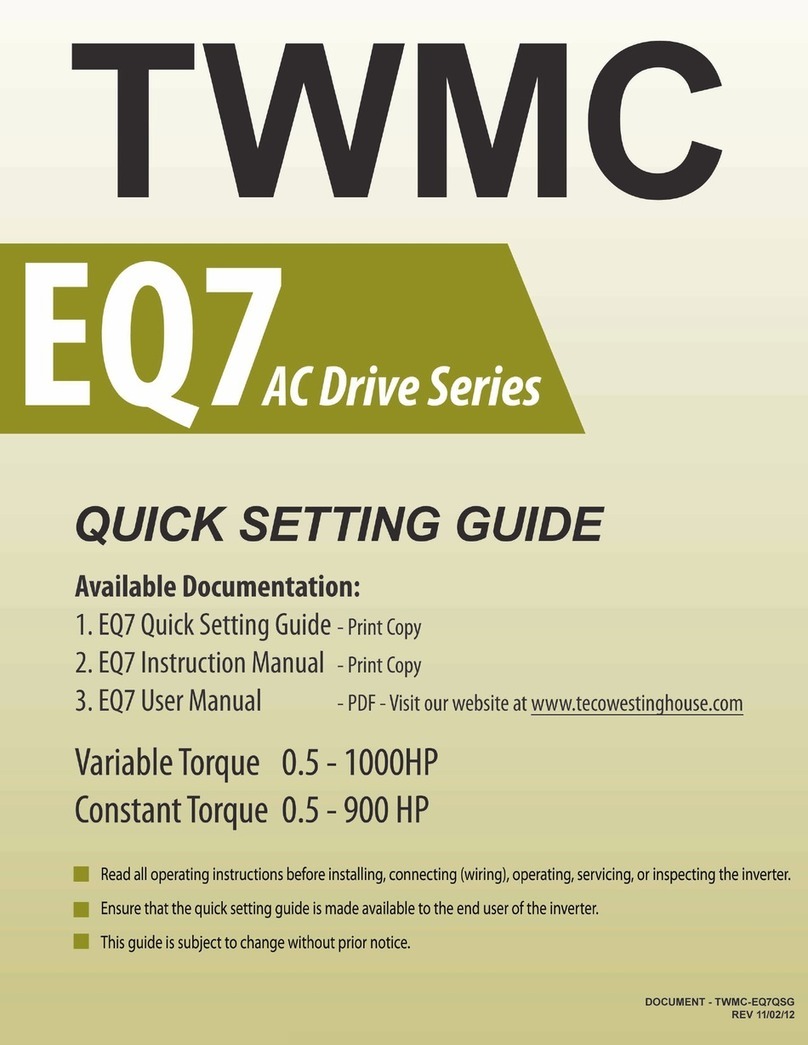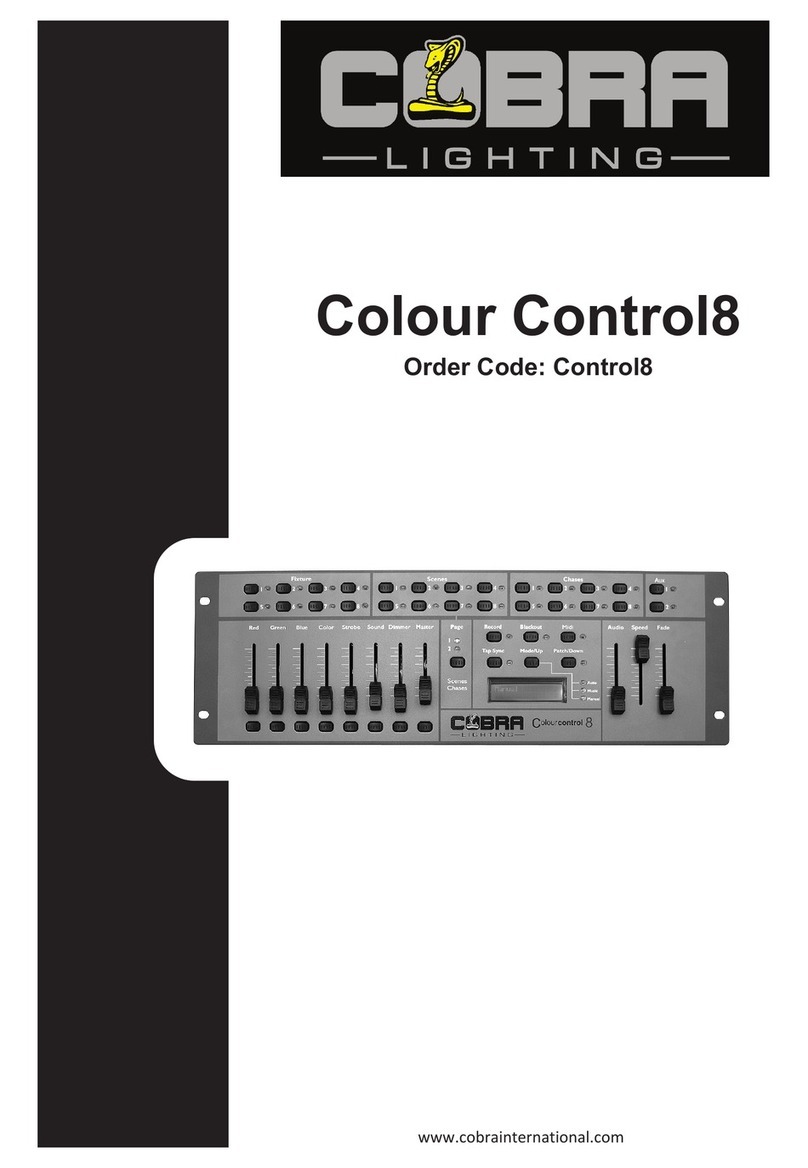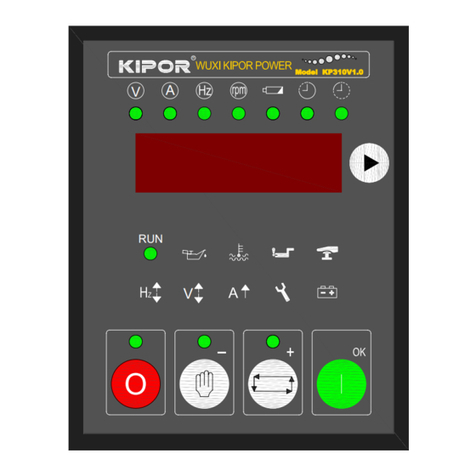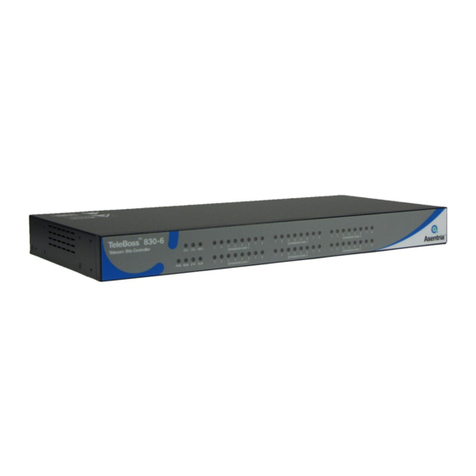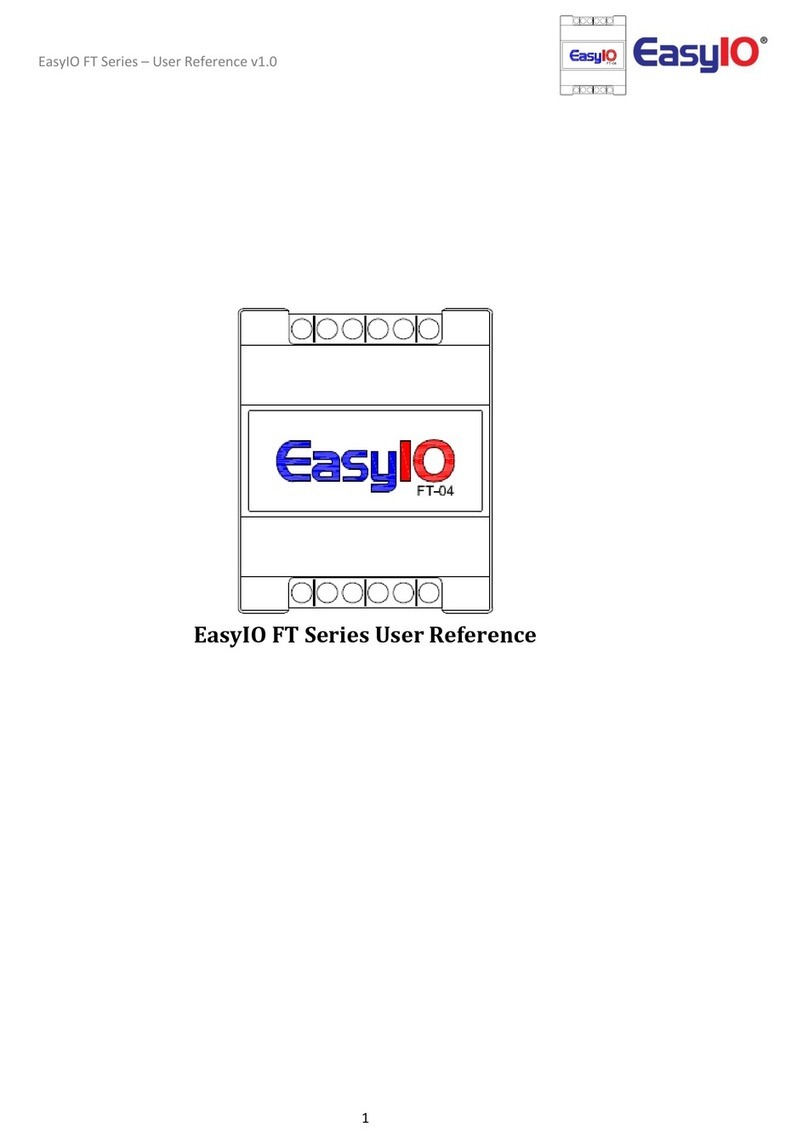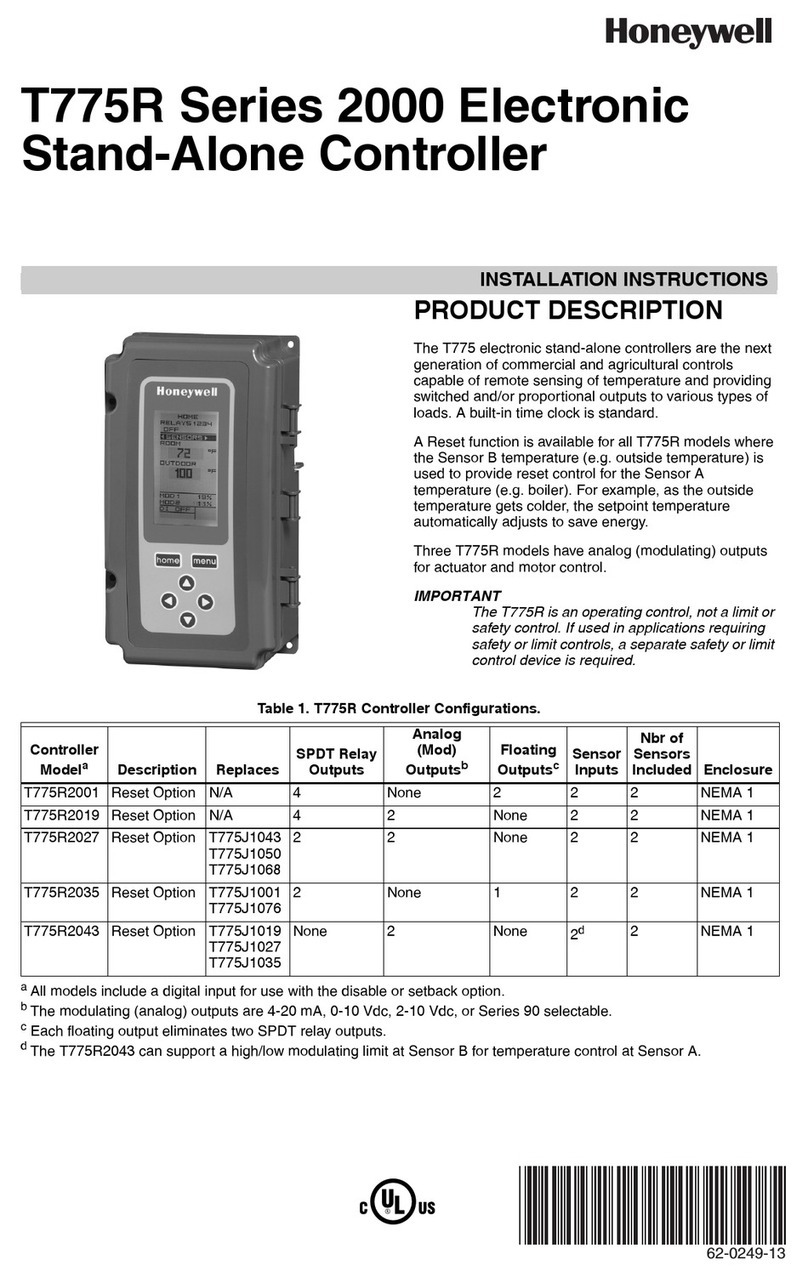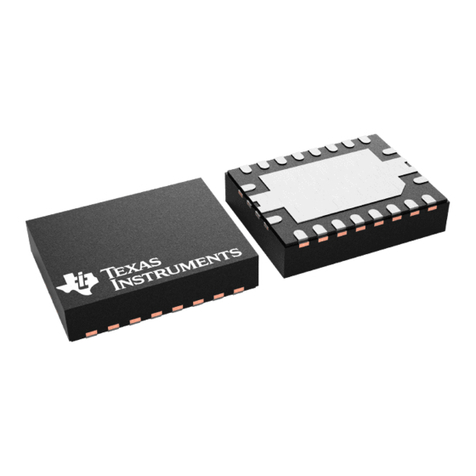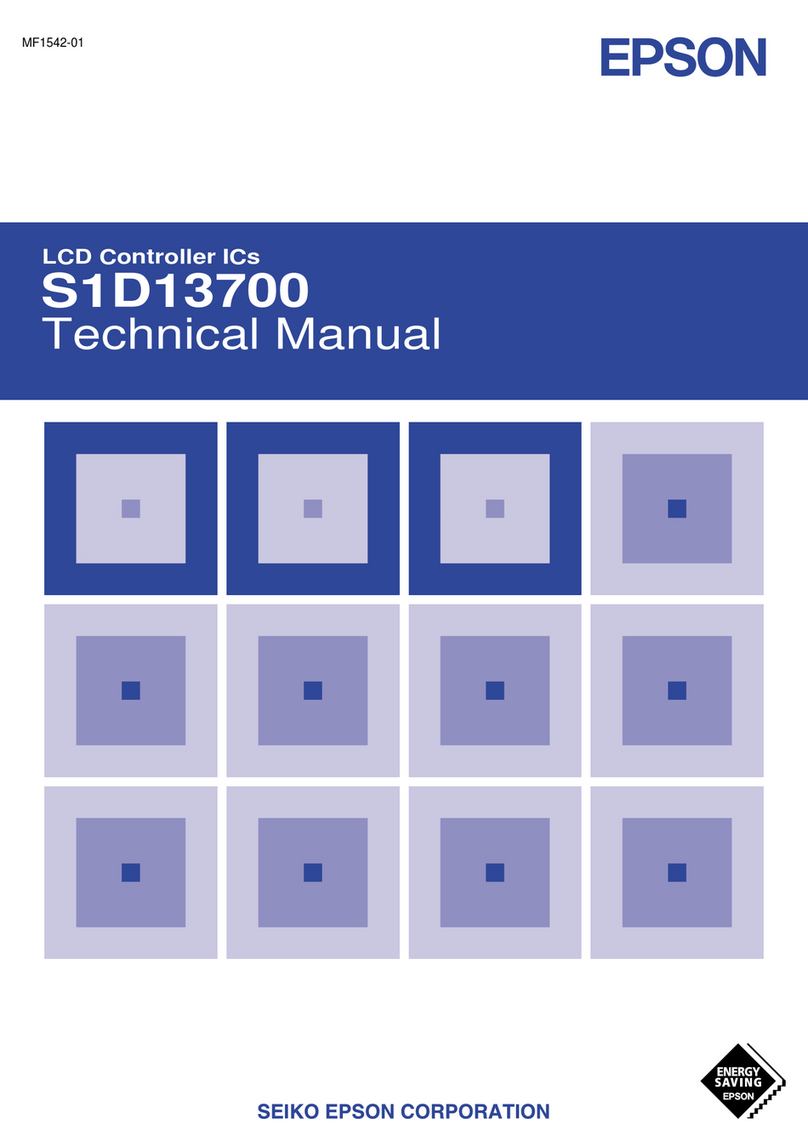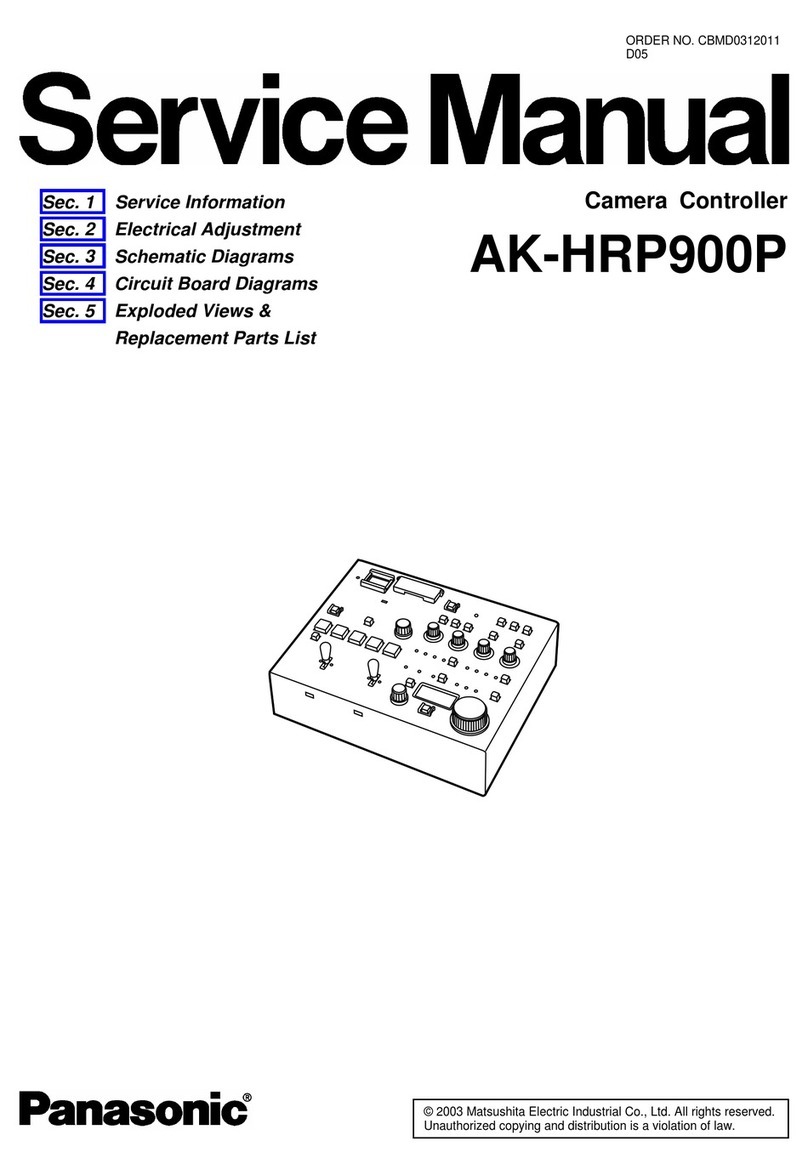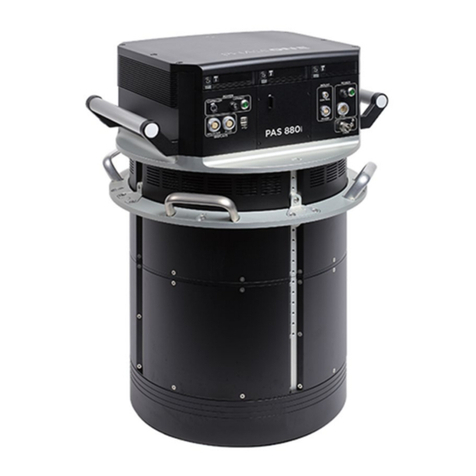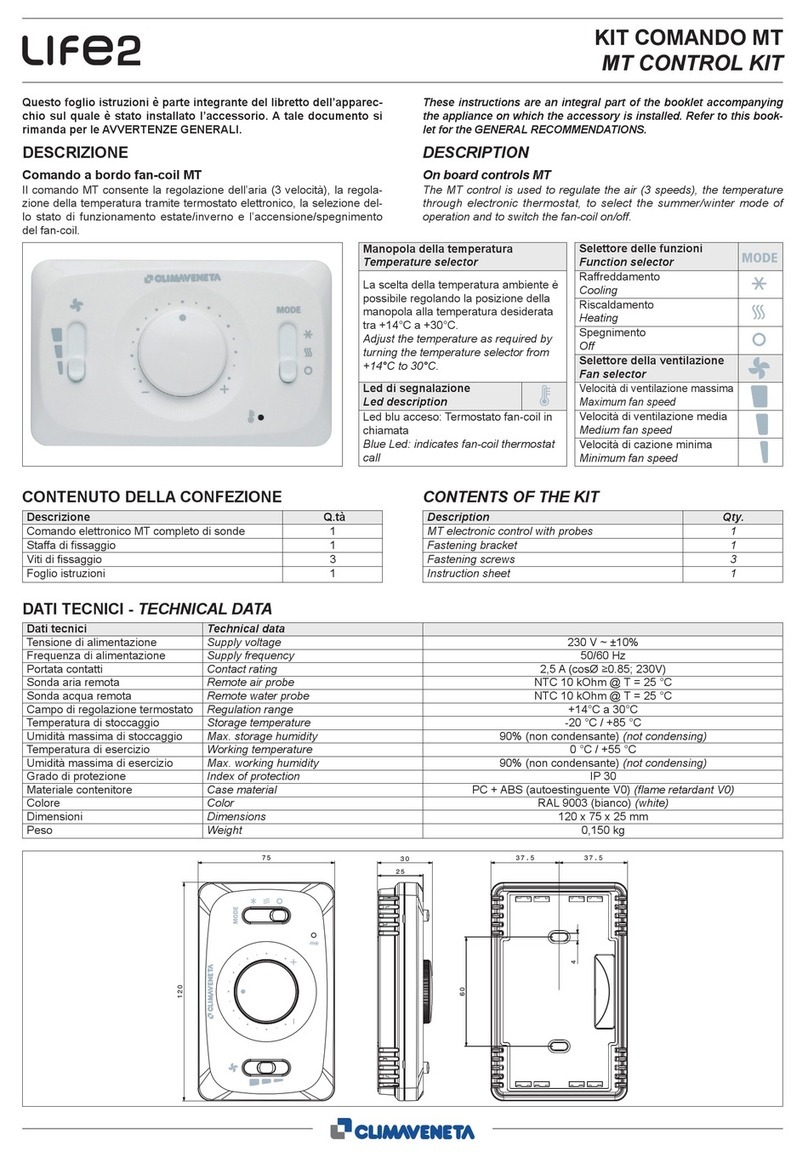TECO-Westinghouse EQ7 Series User manual


i
Preface
The EQ7 product is designed to drive a three-phase induction motor. Read through this instruction manual to
become familiar with proper handling and correct use. Improper handling might result in incorrect operation,
shorter life cycle, or failure of this product as well as the motor.
Have this Instruction Manual delivered to the end user of this product. Keep this Instruction Manual in a safe
place accessible by only people in connection with the VFD until this product is no longer being used.
Read this Instruction Manual in conjunction with EQ7 User Manual.
All EQ7 documentation is subject to change without notice. Be sure to obtain the latest editions for use or visit
our website at www.tecowestinghouse.com.
Available Documentation:
1. EQ7 Quick Setting Guide
2. EQ7 Instruction Manual
3. EQ7 User Manual
Safety Precautions
Read this instruction manual thoroughly before proceeding with installation, connections (wiring), operation, or
maintenance and inspection. Ensure you have sound knowledge of the device and familiarize yourself with all
safety information and precautions before proceeding to operate the inverter.
Safety precautions are classified into the following two categories in this manual.
Failure to heed the information indicated by this symbol may lead to
dangerous conditions, possibly resulting in death or serious bodily
injuries.
Failure to heed the information indicated by this symbol may lead to
dangerous conditions, possibly resulting in minor or light bodily injuries
and/or substantial property damage.
Failure to ignore the information contained under the CAUTION title can also result in serious consequences.
These safety precautions are of utmost importance and must be observed at all times.
Icons
The following icons are used throughout this quick start manual.
This icon indicates information which, if not followed, can result in the inverter not operating to full efficiency,
as well as information concerning incorrect operations and settings which can result in accidents.
This icon indicates information that can prove handy when performing certain settings or operations.
This icon indicates a reference to more detailed information.

ii
Table of Contents
Safety and Conformity ......................................................................................................... iv
Application .............................................................................................................................................................iv
Installation..............................................................................................................................................................iv
Wiring.....................................................................................................................................................................v
Operation...............................................................................................................................................................vi
Maintenance, Inspection and Part Replacements.................................................................................................vii
Conformity with UL standards and CSA standards (cUL –listed for Canada).......................................................viii
1. Drive Model Identification, Installation and Wiring Practices....................................... 1-1
1.1 Drive Models Constant Torque (CT) / Variable Torque (VT) HP Ratings .......................................................1-2
1.2 Installation and wiring practices.......................................................................................................................1-3
1.3 Precautions in running Inverters......................................................................................................................1-11
1.4 Precautions in using special motors................................................................................................................1-11
2. Mounting and Wiring the Inverter.................................................................................... 2-1
2.1 Operating Environment....................................................................................................................................2-1
2.2 Installing the Inverter .......................................................................................................................................2-1
2.3 Wiring...............................................................................................................................................................2-4
2.4 Mounting and Connecting the Keypad ............................................................................................................2-27
2.5 Input Power and Motor Connection.................................................................................................................2-28
3. Operation using the Keypad............................................................................................ 3-1
3.1 LED Monitor, LCD Monitor, and Keys .............................................................................................................3-1
3.2 Overview of Operating Modes.........................................................................................................................3-3
3.3 Running Mode .................................................................................................................................................3-4
3.4 Programming Mode.........................................................................................................................................3-8
4. Function Codes / Parameters ......................................................................................... 4-1
4.1 Function Code Tables .....................................................................................................................................4-1
4.2 Details of Function Codes ...............................................................................................................................4-25
5. Check Motor Rotation and Direction............................................................................... 5-1
6. Speed Reference Command Configuration.................................................................... 6-1
6.1 Reference from the Keypad.............................................................................................................................6-1
6.2 Reference from an Analog Signal (0-10V / 4-20mA) / Speed Pot...................................................................6-2
6.3 Reference from Serial Communication –RS485 ............................................................................................6-4

iii
7. Operation Method Configuration (Run / Stop) ............................................................... 7-1
7.1 Run / Stop from the Keypad ............................................................................................................................7-1
7.2 Run / Stop from External Switch / Contact or Pushbutton ..............................................................................7-2
7.3 Run / Stop from Serial Communication –RS485............................................................................................7-4
8. Motor and Application Specific Settings........................................................................ 8-1
8.1 Set Motor Nameplate Data..............................................................................................................................8-1
8.2 Acceleration and Deceleration Time................................................................................................................8-2
8.3 Torque Boost Setting.......................................................................................................................................8-3
8.3 Load Selection / Auto Torque Boost / Auto Energy Saving Operation............................................................8-4
8.4 Reset EQ7 back to Factory Default.................................................................................................................8-6
9. Using PID Control for Constant Flow / Pressure Applications..................................... 9-1
9.1 What is PID Control.........................................................................................................................................9-1
9.2 Connect Transducer Feedback Signal ...........................................................................................................9-2
9.3 Setpoint Scaling / Transducer Feedback Scaling............................................................................................9-4
10. Troubleshooting ............................................................................................................. 10-1
10.1 Protective Functions......................................................................................................................................10-1
10.2 Before Proceeding with Troubleshooting .....................................................................................................10-2
10.3 If Neither an Alarm Nor “Light Alarm” Indication( ) Appears on the LED Monitor..................................10-5
10.4 If an Alarm Code Appears on the LED Monitor.............................................................................................10-12
10.5 If the “Light Alarm” Indication ( ) Appears on the LED Monitor..............................................................10-25
10.6 If an Abnormal Pattern Appears on the LED Monitor....................................................................................10-26
10.7 If the inverter is running on Single-Phase Power..........................................................................................10-27
11. Specifications ................................................................................................................. 11-1
11.1 Drive Ratings.................................................................................................................................................11-1
11.2 Common Specifications.................................................................................................................................11-7
11.3 External Dimensions, Drive, Panel Cutting, DCR, Keypad ...........................................................................11-12

iv
Application
•The EQ7 drive is designed to drive a three-phase induction motor. Do not use it for single-phase
motors or for other purposes.
Fire or an accident could occur.
•The EQ7 drive may not be used for a life-support system or other purposes directly related to the
human safety.
•Though the EQ7 drive is manufactured under strict quality control, install safety devices for
applications where serious accidents or property damages are foreseen in relation to the failure of
it.
An accident could occur.
Installation
•Install the inverter on a base made of metal or other non-flammable material.
Otherwise, a fire could occur.
•Do not place flammable object nearby.
Doing so could cause fire.
•Inverters with a capacity of 50 HP or above, whose protective structure is IP00 (Open Chassis),
involve a possibility that a human body may touch the live conductors of the main circuit terminal
block. Inverters to which an optional DC reactor is connected also involve the same. Install such
inverters in an inaccessible place.
Otherwise, electric shock or injuries could occur.
•Do not support the inverter by its front cover during transportation.
Doing so could cause a drop of the inverter and injuries.
•Prevent lint, paper fibers, sawdust, dust, metallic chips, or other foreign materials from getting into
the inverter or from accumulating on the heat sink.
•When changing the positions of the top and bottom mounting bases, use only the specified screws.
Otherwise, a fire or an accident might result.
•Do not install or operate an inverter that is damaged or lacking parts.
Doing so could cause fire, an accident or injuries.

v
Wiring
•If no zero-phase current (earth leakage current) detective device such as a ground-fault relay is
installed in the upstream power supply line in order to avoid the entire power supply system's
shutdown undesirable to factory operation, install a residual-current-operated protective device
(RCD)/earth leakage circuit breaker (ELCB) individually to inverters to break the individual inverter
power supply lines only.
Otherwise, a fire could occur.
•When wiring the inverter to the power source, insert a recommended molded case circuit breaker
(MCCB) or residual-current-operated protective device (RCD)/earth leakage circuit breaker (ELCB)
(with overcurrent protection) in the path of each pair of power lines to inverters. Use the
recommended devices within the recommended current capacity.
•Use wires of the specified size.
•Tighten terminals with specified torque.
Otherwise, a fire could occur.
•When there is more than one combination of an inverter and motor, do not use a multi-conductor
cable for the purpose of running the leads together.
•Do not connect a surge absorber to the inverter's output (secondary) circuit.
Doing so could cause a fire.
•Be sure to connect an optional DC reactor (DCR) when the capacity of the power supply
transformer exceeds 500 kVA and is 10 times or more the inverter rated capacity.
Otherwise, a fire could occur.
•Ground the inverter in compliance with the national or local electric code.
•Be sure to ground the inverter's grounding terminals G.
Otherwise, an electric shock or a fire could occur.
•Qualified electricians should carry out wiring.
•Be sure to perform wiring after turning the power OFF.
Otherwise, an electric shock could occur.
•Be sure to perform wiring after installing the inverter unit.
Otherwise, an electric shock or injuries could occur.
•Ensure that the number of input phases and the rated voltage of the product match the number of
phases and the voltage of the AC power supply to which the product is to be connected.
Otherwise, a fire or an accident could occur.
•Do not connect the power supply wires to output terminals (U, V, and W).
•When connecting a DC braking resistor (DBR), never connect it to terminals other than terminals
P(+) and DB.
Doing so could cause fire or an accident.
•In general, the insulation of the control signal wires are not specifically designed to withstand a high
voltage (i.e., reinforced insulation is not applied). Therefore, if a control signal wire comes into direct
contact with a live conductor of the main circuit, the insulation may break down, which would
expose the signal wire to the high voltage of the main circuit. Make sure that the control signal wires
will not come into contact with live conductors of the main circuit.
Doing so could cause an accident or an electric shock.

vi
•Before changing the switches or touching the control circuit terminal symbol plate, turn OFF the
power and wait at least five minutes for inverters of 40 HP or below, or at least ten minutes
for inverters of 50 HP or above. Make sure that the LED monitor and charging lamp are turned
OFF. Further, make sure, using a multimeter or a similar instrument, that the DC link bus voltage
between the terminals P(+) and N(-) has dropped to the safe level (+25 VDC or below).
Otherwise, an electric shock could occur.
•The inverter, motor and wiring generate electric noise. This may cause the malfunction of nearby
sensors and devices. To prevent malfunctioning, implement noise control measures.
Otherwise an accident could occur.
Operation
•Be sure to mount the front cover before turning the power ON. Do not remove the cover when the
inverter power is ON.
Otherwise, an electric shock could occur.
•Do not operate switches with wet hands.
Doing so could cause electric shock.
•If the auto-reset function has been selected, the inverter may automatically restart and drive the
motor depending on the cause of tripping. Design the machinery or equipment so that human safety
is ensured at the time of restarting.
Otherwise, an accident could occur.
•If the stall prevention function (current limiter), automatic deceleration (anti-regenerative control), or
overload prevention control has been selected, the inverter may operate with
acceleration/deceleration or frequency different from the commanded ones. Design the machine so
that safety is ensured even in such cases.
•If any of the protective functions have been activated, first remove the cause. Then, after checking
that the all run commands are set to OFF, release the alarm. If the alarm is released while any run
commands are set to ON, the inverter may supply the power to the motor, running the motor.
Otherwise, an accident could occur.
•If you enable the "Restart mode after momentary power failure" (Function code F14 = 3 to 5), then
the inverter automatically restarts running the motor when the power is recovered.
Design the machinery or equipment so that human safety is ensured after restarting.
•If the user configures the function codes wrongly without completely understanding this Instruction
Manual and the EQ7 DRIVE User's Manual, the motor may rotate with a torque or at a speed not
permitted for the machine.
An accident or injuries could occur.
•Even if the inverter has interrupted power to the motor, if the voltage is applied to the main circuit
input terminals L1/R, L2/S and L3/T, voltage may be output to inverter output terminals U, V, and W.
•Even if the run command is set to OFF, voltage is output to inverter output terminals U, V, and W if
the servo-lock command is ON.
•Even if the motor is stopped due to DC braking or preliminary excitation, voltage is output to inverter
output terminals U, V, and W.
An electric shock may occur.
•The inverter can easily accept high-speed operation. When changing the speed setting, carefully
check the specifications of motors or equipment beforehand.
Otherwise, injuries could occur.

vii
•Do not touch the heat sink and braking resistor because they become very hot.
Doing so could cause burns.
•The DC brake function of the inverter does not provide any holding mechanism.
Injuries could occur.
•Ensure safety before modifying the function code settings.
Run commands (e.g., "Run forward" FWD), stop commands (e.g., "Coast to a stop" BX), and
frequency change commands can be assigned to digital input terminals. Depending upon the
assignment states of those terminals, modifying the function code setting may cause a sudden
motor start or an abrupt change in speed.
•When the inverter is controlled with the digital input signals, switching run or frequency command
sources with the related terminal commands (e.g., SS1, SS2, SS4, SS8, Hz2/Hz1, Hz/PID, IVS, and
LE) may cause a sudden motor start or an abrupt change in speed.
•Ensure safety before modifying customizable logic related function code settings (U codes and
related function codes) or turning ON the "Cancel customizable logic" terminal command CLC.
Depending upon the settings, such modification or cancellation of the customizable logic may
change the operation sequence to cause a sudden motor start or an unexpected motor operation.
An accident or injuries could occur.
Maintenance, inspection and parts replacement
•Before proceeding to the maintenance/inspection jobs, turn OFF the power and wait at least five
minutes for inverters of 40 HP or below, or at least ten minutes for inverters of 50 HP or
above. Make sure that the LED monitor and charging lamp are turned OFF. Further, make sure,
using a multimeter or a similar instrument, that the DC link bus voltage between the terminals P(+)
and N(-) has dropped to the safe level (+25 VDC or below).
Otherwise, an electric shock could occur.
•Maintenance, inspection, and parts replacement should be made only by qualified persons.
•Take off the watch, rings and other metallic objects before starting work.
•Use insulated tools.
Otherwise, an electric shock or injuries could occur.
•Never modify the inverter.
Doing so could cause an electric shock or injuries.
Disposal
•Treat the inverter as an industrial waste when disposing of it.
Otherwise injuries could occur.
GENERAL PRECAUTIONS
Drawings in this manual may be illustrated without covers or safety shields for explanation of detail
parts. Restore the covers and shields in the original state and observe the description in the manual
before starting operation.

viii
Conformity with UL standards and CSA standards (cUL-listed for Canada)
UL/cUL-listed inverters are subject to the regulations set forth by the UL standards and CSA standards (cUL-
listed for Canada) by installation within precautions listed below.
1. Solid state motor overload protection (motor protection by electronic thermal overload relay) is provided in each
model.
Use function codes F10 to F12 to set the protection level.
2. Use Cu wire only.
3. Use Class 1 wire only for control circuits.
4. Short circuit rating
"Suitable For Use On A Circuit Of Delivering Not More Than 100,000 rms Symmetrical Amperes, 240 Volts
Maximum for 230 V class input 40 HP or below, 230 Volts maximum for 230 V class input 50 HP or above
when protected by Class J Fuses or a Circuit Breaker having an interrupting rating not less than 100,000 rms
Symmetrical Amperes, 240 Volts Maximum." Models FRN; rated for 230 V class input.
"Suitable For Use On A Circuit Of Delivering Not More Than 100,000 rms Symmetrical Amperes, 480 Volts
Maximum when protected by Class J Fuses or a Circuit Breaker having an interrupting rating not less than
100,000 rms Symmetrical Amperes, 480 Volts Maximum." Models FRN; rated for 460 V class input.
"Integral solid state short circuit protection does not provide branch circuit protection. Branch circuit protection
must be provided in accordance with the National Electrical Code and any additional local codes."
5. Field wiring connections must be made by a UL Listed and CSA Certified closed-loop terminal connector sized
for the wire gauge involved. Connector must be fixed using the crimp tool specified by the connector
manufacturer.
6. All circuits with terminals L1/R, L2/S, L3/T, R0, T0, R1, T1 must have a common disconnect and be connected
to the same pole of the disconnect if the terminals are connected to the power supply.
7. When using the inverter as a UL Enclosed Type (UL TYPE1), purchase Type 1 kit (option) and mount it on the
inverter as instructed.

ix
Conformity with UL standards and CSA standards (cUL-listed for Canada) (continued)
8. Install UL certified fuses or circuit breaker between the power supply and the inverter, referring to the table below.
Power supply voltage
Nominal
applied motor
(HP)
Inverter type
CT/VT mode
Class J fuse size (A)
Circuit breaker trip size (A)
Required
torque
lb-in (Nm)
Wire size
AWG (mm2)
Main terminal
Aux. control power
supply
Aux. Fan power supply
Main terminal
Aux. control power
supply
Aux. fan power supply
L1/R, L2/S, L3/T
U, V, W
Three-
phase
Single-
phase
60C (140F)
Cu wire
75C (167F)
Cu wire
Remarks
60C (140F)
Cu wire
75C (167F)
Cu wire
Remarks
230 V
0.5
0.25
EQ7-20P5-C
CT/
VT
10
5
10.6
(1.2)
-
-
14
(2.1)
14
(2.1)
*1
-
14
(2.1)
14
(2.1)
*1
-
-
-
1
0.5
EQ7-2001-C
15
10
2
1
EQ7-2002-C
20
15
15.9
(1.8)
10.6
(1.2)
14
(2.1)
*1
*2
3
1.5
EQ7-2003-C
30
20
5
3
EQ7-2005-C
40
30
10
(5.3)
10
(5.3)
12
(3.3)
12
(3.3)
7.5
EQ7-2007-C
60
50
30.9
(3.5)
-
8
(8.4)
*2
*3
-
8
(8.4)
*2
*3
EQ7-2010-C
CT
10
5
VT
75
75
EQ7-2015-C
CT
15
7.5
VT
100
100
6
(13.3)
-
EQ7-2020-C
CT
20
10
VT
150
125
4
(21.2)
6
(13.3)
-
EQ7-2025-C
CT
51.3
(5.8)
3
(26.7)
-
4
(21.2)
-
25
VT
175
150
1
(42.4)
3
(26.7)
3
(26.7)
4
(21.2)
EQ7-2030-C
CT
30
15
VT
200
175
-
2
(33.6)
*2
*3
2
(33.6)
3
(26.7)
EQ7-2040-C
CT
40
20
VT
250
200
2/0
(67.4)
-
2
(33.6)
*2
*3
EQ7-2050-C
CT
119.4
(13.5)
1
(42.4)
50
25
VT
350
250
3/0
(85)
1/0
(53.5)
EQ7-2060-C
CT
238.9
(27)
10.6
(1.2)
4/0
(107.2)
14
(2.1)
60
30
VT
400
300
4/0
(107.2)
EQ7-2075-C
CT
75
VT
450
350
2/0×2
(67.4×2)
EQ7-2100-C
CT
100
VT
500
3/0×2
(85×2)
3/0×2
(85×2)
40
EQ7-2125-C
CT
424.7
(48)
125
VT
600
400
4/0×2
(107.2×2
)
4/0×2
(107.2×2
)
EQ7-2150-C
CT
150
50
VT
700
500
300×2
(152×2)
300×2
(152×2)
Note 1: Control circuit terminals Tightening torque: 6.1 lb-in (0.7 Nm), Recommended wire size: AWG 19 or 18 (0.65 to 0.82 mm2)
*1 No terminal end treatment is required for connection.
*2 Use 75C (167F) Cu (Copper) wire only.
*3 The wire size of UL Open Type and Enclosed Type are common. Please contact us if UL Open Type exclusive wire is necessary.

x
Conformity with UL standards and CSA standards (cUL-listed for Canada) (continued)
Power supply voltage
Nominal applied
motor
(HP)
Inverter type
CT/VT mode
Class J fuse size (A)
Circuit breaker trip size (A)
Required
torque
lb-in (Nm)
Wire size
AWG (mm2)
Main terminal
Aux. control power supply
Aux. Fan power supply
Main terminal
Aux. control power supply
Aux. fan power supply
L1/R, L2/S, L3/T
U, V, W
Three-
phase
Single-
phase
60C (140F)
Cu wire
75C (167F)
Cu wire
Remarks
60C (140F)
Cu wire
75C (167F)
Cu wire
Remarks
460 V
0.5
0.25
EQ7-40P5-C
CT/
VT
3
5
10.6
(1.2)
-
-
14
(2.1)
14
(2.1)
*1
-
14
(2.1)
14
(2.1)
*1
-
-
-
1
0.5
EQ7-4001-C
6
2
1
EQ7-4002-C
10
10
15.9
(1.8)
10.6
(1.2)
14
(2.1)
*1
*2
3
1.5
EQ7-4003-C
15
15
5
3
EQ7-4005-C
20
20
7.5
EQ7-4007-C
30
30
30.9
(3.5)
-
12
(3.3)
*2
*3
-
12
(3.3)
*2
*3
EQ7-4010-C
CT
10
VT
40
40
10
(5.3)
5
EQ7-4015-C
CT
15
VT
60
50
8
(8.4)
10
(5.3)
7.5
EQ7-4020-C
CT
20
VT
70
60
8
(8.4)
10
EQ7-4025-C
CT
51.3
(5.8)
6
(13.3)
6
(13.3)
-
-
6
(13.3)
6
(13.3)
-
-
25
VT
90
75
EQ7-4030-C
CT
30
15
VT
100
100
4
(21.2)
EQ7-4040-C
CT
40
20
VT
125
125
3
(26.7)
4
(21.2)
4
(21.2)
EQ7-4050-C
CT
119.4
(13.5)
2
(33.6)
2
(33.6)
50
25
VT
175
2
(33.6)
3
(26.7)
EQ7-4060-C
CT
60
30
VT
200
150
-
2
(33.6)
*2
*3
EQ7-4075-C
CT
75
VT
250
200
1/0
(53.5)
-
*2
*3
EQ7-4100-C
CT
100
40
VT
175
1/0
(53.5)
EQ7-4125-C
CT
238.9
(27)
10.6
(1.2)
2/0
(67.4)
4/0
(107.2)
14
(2.1)
*1
*2
125
50
VT
300
200
EQ7-4150-C
CT/VT
350
250
150
1/0×2
(53.5×2
)
1/0×2
(53.5×2)
60
EQ7-4200-C
CT/VT
400
300
200
2/0×2
(67.4×2)
EQ7-4250-C
CT/VT
500
350
424.7
(48)
250
75
3/0×2
(85×2)
3/0×2
(85×2)
EQ7-4300-C
CT/VT
600
500
300
100
4/0×2
(107.2×
2)
250×2
(127×2)
EQ7-4350-C
CT/VT
700
350
250×2
(127×2)
300×2
(152×2)
EQ7-4450-C
CT
700
Note 1: Control circuit terminals Tightening torque: 6.1 lb-in (0.7 Nm), Recommended wire size: AWG 19 or 18 (0.65 to 0.82 mm2)
*1 No terminal end treatment is required for connection.
*2 Use 75C (167F) Cu (Copper) wire only.
*3 The wire size of UL Open Type and Enclosed Type are common. Please contact us if UL Open Type exclusive wire is necessary.

xi
Conformity with UL standards and CSA standards (cUL-listed for Canada) (continued)
Power supply voltage
Nominal applied
motor
HP
Inverter type
CT//VT mode
Class J fuse size (A)
Circuit breaker trip size (A)
Required
torque lb-in
(Nm)
Wire size
AWG (mm2)
Main terminal
Aux. control power supply
Aux. Fan power supply
Main terminal
Aux. control power supply
Aux. fan power supply
L1/R, L2/S, L3/T
U, V, W
Three-
phase
Single-
phase
60C (140F)
Cu wire
75C (167F)
Cu wire
Remarks
60C (140F)
Cu wire
75C (167F)
Cu wire
Remarks
460 V
350
-
EQ7-4450-C
CT
800
600
424.7
(48)
10.6
(1.2)
10.6
(1.2)
-
300×2
(152×2)
-
*2
*3
-
350×2
(177×2)
-
*2
*3
14
(2.1)
*1
*2
14
(2.1)
*1
*2
450
125
VT
1000
400×2
(203×2)
400×2
(203×2)
400
EQ7-4500-C
CT
250×2
(127×2)
*2
*4
300×2
(152×2)
*2
*4
450
-
800
300×2
(152×2)
350×2
(177×2)
-
150
EQ7-4600-C
CT
500
EQ7-4500-C
VT
1200
400×2
(203×2)
400×2
(203×2)
-
EQ7-4600-C
CT
-
150
EQ7-4700-C
CT
600
200
EQ7-4600-C
VT
1200
500×2
(253×2)
500×2
(253×2)
-
EQ7-4700-C
CT
-
200
EQ7-4800-C
CT
700
EQ7-4700-C
VT
1400
600×2
(304×2)
600×2
(304×2)
-
EQ7-4800-C
CT
800
250
VT
1600
350×3
(177×3)
400×3
(203×3)
EQ7-4900-C
CT
900
300
VT
2000
1400
500×3
(253×3)
600×3
(304×3)
EQ7-41000-C
CT
1000
400
VT
2200
1600
600×3
(304×3)
500×4
(253×4)
Note:Control circuit terminals Tightening torque: 6.1 lb-in (0.7 Nm), Recommended wire size: AWG 19 or 18 (0.65 to 0.82 mm2)
*1 No terminal end treatment is required for connection.
*2 Use 75C (167F) Cu (Copper) wire only.
*3 The wire size of UL Open Type and Enclosed Type are common. Please contact us if UL Open Type exclusive wire is necessary.
*4 It is showing the wire size for UL Open Type.
See additional material INR-SI47-1365-JE for UL Enclosed Type (Pack with TYPE1 kit).

1-1
Chapter 1 Drive Model Identification
It is essential to verify the EQ7 drive nameplate and make sure that the EQ7 drive has the correct rating so it can be
used in your application with the proper sized AC motor.
Unpack the EQ7 drive and check the following:
(1) The EQ7 drive and quick start guide (this document) are contained in the package. The EQ7 DRIVE-2100-C /
EQ7 DRIVE-4100-C and higher rated types come with a DC reactor (DCR). Be sure to connect the DCR.
(2) The EQ7 drive has not been damaged during transportation there should be no dents or parts missing.
(3) The EQ7 drive is the type you ordered. You can check the type and specifications on the main nameplate. (Main
and sub nameplates are attached to the EQ7 drive and are located as shown below.)
(4) Check that the input voltage range meets the input power requirements.
(5) Ensure that for variable torque applications the motor rated current matches the variable torque FLA or for
constant torque applications it matches the constant torque FLA. Verify that the output voltage rating on the EQ7
drive label meets the motor requirements (nameplate).
Figure 1.1 Nameplate
TYPE: Type of inverter
EQ7 –X XXX - X C = Chassis; IP20 or IP00
HP Rating (Variable Torque)
2 = 230V, 4 = 460V
Product Type

1-2
1.1 Drive Models Constant Torque (CT) / Variable Torque (VT) HP Ratings
Table 1.1
This table shows the Variable Torque and Constant Torque ratings for all EQ7 drive models.
* The HP ratings marked with (*) are suitable for constant torque V/F Control. Refer to EQ7 Instruction Manual
chapter 11 for constant torque vector control HP ratings.
Voltage
EQ7 DRIVE
Variable Torque HP
Constant Torque HP
Frame /
Enclosure
230V
EQ7-20P5-C
0.5
0.5
Plastic
EQ7-2001-C
1
1
Plastic
EQ7-2002-C
2
2
Plastic
EQ7-2003-C
3
3
Plastic
EQ7-2005-C
5
5
Plastic
EQ7-2007-C
7.5
7.5
Plastic
EQ7-2010-C
10
7.5
Plastic
EQ7-2015-C
15
10
Plastic
EQ7-2020-C
20
15
Plastic
EQ7-2025-C
25
20
Plastic
EQ7-2030-C
30
25
Plastic
EQ7-2040-C
40
30
Plastic
EQ7-2050-C
50
40
Sheet Metal
EQ7-2060-C
60
50
Sheet Metal
EQ7-2075-C
75
60
Sheet Metal
EQ7-2100-C
100
75
Sheet Metal
EQ7-2125-C
125
100
Sheet Metal
EQ7-2150-C
150
125
Sheet Metal
460V
EQ7-40P5-C
0.5
0.5
Plastic
EQ7-4001-C
1
1
Plastic
EQ7-4002-C
2
2
Plastic
EQ7-4003-C
3
3
Plastic
EQ7-4005-C
5
5
Plastic
EQ7-4007-C
7.5
7.5
Plastic
EQ7-4010-C
10
7.5
Plastic
EQ7-4015-C
15
10
Plastic
EQ7-4020-C
20
15
Plastic
EQ7-4025-C
25
20
Plastic
EQ7-4030-C
30
25
Plastic
EQ7-4040-C
40
30
Plastic
EQ7-4050-C
50
40
Sheet Metal
EQ7-4060-C
60
50
Sheet Metal
EQ7-4075-C
75
60
Sheet Metal
EQ7-4100-C
100
75
Sheet Metal
EQ7-4125-C
125
100
Sheet Metal
EQ7-4150-C
150
125/150*
Sheet Metal
EQ7-4200-C
200
200*
Sheet Metal
EQ7-4250-C
250
250*
Sheet Metal
EQ7-4300-C
300
300*
Sheet Metal
EQ7-4350-C
350
350*
Sheet Metal
EQ7-4450-C
400/450
350
Sheet Metal
EQ7-4500-C
500
400/450*
Sheet Metal
EQ7-4600-C
600
500*
Sheet Metal
EQ7-4700-C
700
600*
Sheet Metal
EQ7-4800-C
800
700*
Sheet Metal
EQ7-4900-C
900
800
Sheet Metal
EQ7-41000-C
1000
900
Sheet Metal

1-3
1.2 Installation and wiring practices
Mounting of the EQ7 drive is extremely important for accessibility as well as for the environment. Various EQ7 drive
models are available and the mounting dimensions (footprint) may be different. Install the EQ7 drive in an
environment that satisfies the requirements.
TECO-Westinghouse Motor Company strongly recommends installing inverters in a panel for safety reasons, in
particular, when installing the ones that have an enclosure rating of IP00.
When installing the EQ7 drive in a place out of the specified environmental requirements, it is necessary to derate the
inverter or consider the panel engineering design suitable for the special environment or the panel installation
location. For details consult your TECO-Westinghouse Motor Company representative. The special environments
listed below require using the specially designed panel or considering the panel installation location.
Installation environment
Environments
Possible problems
Sample measures
Applications
Highly concentrated
sulfurizing gas or
other corrosive gases
Corrosive gases cause parts
inside the inverter to corrode,
resulting in an inverter
malfunction.
Any of the following measures may be
necessary.
-Mount the inverter in a sealed panel
with IP6X or air-purge mechanism.
-Place the panel in a room free from
influence of the gases.
Paper manufacturing, sewage
disposal, sludge treatment,
tire manufacturing, gypsum
manufacturing, metal
processing, and a particular
process in textile factories.
A lot of conductive
dust or foreign
material (e.g., metal
powders or shavings,
carbon fibers, or
carbon dust)
Entry of conductive dust into
the inverter causes a short
circuit.
Any of the following measures may be
necessary.
-Mount the inverter in a sealed panel.
-Place the panel in a room free from
influence of the conductive dust.
Wiredrawing machines, metal
processing, extruding
machines, printing presses,
combustors, and industrial
waste treatment.
A lot of fibrous or
paper dust
Fibrous or paper dust
accumulated on the heat sink
lowers the cooing effect.
Entry of dust into the inverter
causes the electronic circuitry
to malfunction.
Any of the following measures may be
necessary.
-Mount the inverter in a sealed panel
that shuts out dust.
-Ensure a maintenance space for
periodical cleaning of the heat sink in
panel engineering design.
-Employ external cooling when
mounting the inverter in a panel for
easy maintenance and perform
periodical maintenance.
Textile manufacturing and
paper manufacturing.
High humidity or dew
condensation
In an environment where a
humidifier is used or where the
air conditioner is not equipped
with a dehumidifier, high
humidity or dew condensation
results, which causes a short-
circuiting or malfunction of
electronic circuitry inside the
inverter.
- Put a heating module such
as a space heater in the panel.
Outdoor installation.
Film manufacturing line,
pumps and food processing.
Vibration or shock
exceeding the
specified level
If a large vibration or shock
exceeding the specified level is
applied to the inverter, for
example, due to a carrier
running on seam joints of rails
or blasting at a construction
site, the inverter structure gets
damaged.
-Insert shock-absorbing materials
between the mounting base of the
inverter and the panel for safe
mounting.
Installation of an inverter
panel on a carrier or self-
propelled machine.
Ventilating fan at a
construction site or a press
machine.
Fumigation for export
packaging
Halogen compounds such as
methyl bromide used in
fumigation corrodes some
parts inside the inverter.
-When exporting an inverter built in a
panel or equipment, pack them in a
previously fumigated wooden crate.
-When packing an inverter alone for
export, use a laminated veneer lumber
(LVL).
Exporting.
Table 1.2: Installation environment

1-4
Storage environment
The storage environment in which the inverter is stored after purchase is different from the operation environment.
For details, refer to the EQ7 DRIVE User's Manual, Chapter 2.
Wiring precautions
(1) Route the wiring of the control circuit terminals as far from the wiring of the main circuit as possible. Otherwise
electric noise may cause malfunctions.
(2) Place the control circuit wires inside the inverter to keep them away from the live parts of the main circuit (such as
the terminal block of the main circuit).
(3) If more than one motor is to be connected to a single inverter, the wiring length should be the sum of the length of
the wires to the motors.
(4) Drive output terminals (U, V, W)
1) Connect these terminals to a 3-phase motor in the correct phase sequence. If the direction of motor rotation is
incorrect, exchange any two of the U, V, and W phases.
2) Do not connect a power factor correction capacitor or surge suppressor to the inverter output.
3) If the cable from the inverter to the motor is very long, a high-frequency current may be generated by stray
capacitance between the cables and result in an overcurrent trip of the inverter, an increase in leakage current,
or a reduction in current indication precision.
When a motor is driven by a PWM-type inverter, the motor terminals may be subject to surge voltage
generated by inverter element switching. If the motor cable (with 460 V series motors, in particular) is particularly
long, surge voltage will deteriorate motor insulation. To prevent this, use the following guidelines:
Inverter 7.5 HP and larger
Motor Insulation Level
1000 V
1300 V
1600 V
460 VAC Input Voltage
66 ft (20 m)
328 ft (100 m)
1312 ft (400 m)*
230 VAC Input Voltage
1312 ft (400 m)*
1312 ft (400 m)*
1312 ft (400 m)*
Inverter 5 HP and smaller
Motor Insulation Level
1000 V
1300 V
1600 V
460 VAC Input Voltage
66 ft (20 m)
165 ft (50 m)*
165 ft (50 m)*
230 VAC Input Voltage
328 ft (100 m)*
328 ft (100 m)*
328 ft (100 m)*
* For this case the cable length is determined by secondary effects and not voltage spiking.
• When a motor protective thermal O/L relay is inserted between the inverter and the motor, the thermal
O/L relay may malfunction (particularly in the 460 V series), even when the cable length is 165 ft (50 m) or
less. To correct, insert a filter or reduce the carrier frequency. (Use function code F26 "Motor sound".)
•For the vector control mode, wiring length is 328 ft (100 m) or less.
(5) When an output circuit filter is inserted in the secondary circuit or the wiring between the inverter and the
motor is long, a voltage loss occurs due to reactance of the filter or wiring so that the insufficient voltage may cause
output current oscillation or a lack of motor output torque. To avoid it, select the constant torque load by setting the
function code F37 (Load Selection/Auto Torque Boost/Auto Energy Saving Operation 1) to "1" and keep the inverter
output voltage at a higher level by configuring H50/H52 (Non-linear V/f Pattern, Frequency) and H51/H53 (Non-linear
V/f Pattern, Voltage).

1-5
Precautions for connection of peripheral equipment
(1) Phase-advancing capacitors for power factor correction
Do not mount a phase-advancing capacitor for power factor correction in the inverter's input (primary) or output
(secondary) circuit. Mounting it in the input (primary) circuit takes no effect. To correct the inverter power factor,
use an optional DC reactor (DCR). Mounting it in the output (secondary) circuit causes an overcurrent trip,
disabling operation.
An overvoltage trip that occurs when the inverter is stopped or running with a light load is assumed to be due to
surge current generated by open/close of phase-advancing capacitors in the power system. An optional DC/AC
reactor (DCR/ACR) is recommended as a measure to be taken at the inverter side.
Input current to an inverter contains a harmonic component that may affect other motors and phase-advancing
capacitors on the same power supply line. If the harmonic component causes any problems, connect an optional
DCR/ACR to the inverter. In some cases, it is necessary to insert a reactor in series with the phase-advancing
capacitors.
(2) Power supply lines (Application of a DC/AC reactor)
Use an optional DC reactor (DCR) when the capacity of the power supply transformer is 500 kVA or more and is
10 times or more the inverter rated capacity or when there are thyristor-driven loads. If no DCR is used, the
percentage-reactance of the power supply decreases, and harmonic components and their peak levels increase.
These factors may break rectifiers or capacitors in the converter section of the inverter, or decrease the
capacitance of the capacitors.
If the input voltage unbalance rate is 2% to 3%, use an optional AC reactor (ACR).
3)61800(IEC67×
(V)voltageaveragephase-Three
(V)voltageMin-(V)voltageMax
=(%)unbalanceVoltage -
(3) DC reactor (DCR) for correcting the inverter input power factor (for suppressing harmonics)
To correct the inverter input power factor (to suppress harmonics), use an optional DCR. Using a DCR increases
the reactance of inverter’s power source so as to decrease harmonic components on the power source lines and
correct the power factor of the inverter.
DCR models
Input power factor
Remarks
DCR2/4-/A/B
Approx. 90% to 95%
The last letter identifies the capacitance.
DCR2/4-C
Approx. 86% to 90%
Exclusively designed for inverters of 50 HP or above.
For selecting DCR models, refer to Chapter 11 "SPECIFICATIONS."
(4) PWM converter for correcting the inverter input power factor
Using a PWM converter (High power-factor, regenerative PWM converter) corrects the inverter power factor up to
nearly 100%. When combining an inverter with a PWM converter, disable the main power down detection by
setting the function code H72 to "0." If the main power loss detection is enabled (H72 = 1 by factory default), the
inverter interprets the main power as being shut down, ignoring an entry of a run command.

1-6
(5) Molded case circuit breaker (MCCB) or residual-current-operated protective device (RCD)/earth leakage circuit
breaker (ELCB)
Install a recommended MCCB or RCD/ELCB (with overcurrent protection) in the primary circuit of the inverter to
protect the wiring. Since using an MCCB or RCD/ELCB with a lager capacity than recommended ones breaks the
protective coordination of the power supply system, be sure to select recommended ones. Also select ones with
short-circuit breaking capacity suitable for the power source impedance.
Molded Case Circuit Breaker (MCCB) and Residual-Current-Operated Protective Device (RCD)/Earth Leakage
Circuit Breaker (ELCB)
Power
supply
voltage
Nominal
applied
motor
(HP)
Inverter type
CT/VT
mode
Rated current of
MCCB and
RCD/ELCB (A)
Three
-
phase
Single-
phase
w/ DCR
w/o
DCR
230 V
0.5
0.25
EQ7-20P5-C
CT/VT
5
5
1
0.5
EQ7-2001-C
10
2
1
EQ7-2002-C
10
15
3
1.5
EQ7-2003-C
20
5
3
EQ7-2005-C
20
30
7.5
EQ7-2007-C
30
50
EQ7-2010-C
CT
10
5
VT
40
75
EQ7-2015-C
CT
15
7.5
VT
50
100
EQ7-2020-C
CT
20
10
VT
75
125
EQ7-2025-C
CT
25
VT
100
150
EQ7-2030-C
CT
30
15
VT
175
EQ7-2040-C
CT
40
20
VT
150
200
EQ7-2050-C
CT
50
25
VT
175
250
EQ7-2060-C
CT
60
30
VT
200
300
EQ7-2075-C
CT
75
VT
250
350
EQ7-2100-C
CT
100
VT
350
--
40
EQ7-2125-C
CT
125
VT
400
EQ7-2150-C
CT
150
50
VT
350
Power
supply
voltage
Nominal
applied
motor
(HP)
Inverter type
CT/VT
mode
Rated current of
MCCB and
RCD/ELCB (A)
Three
-
phase
Single-
phase
w/ DCR
w/o
DCR
460 V
0.5
0.25
EQ7-40P5-C
CT/VT
5
5
1
0.5
EQ7-4001-C
2
1
EQ7-4002-C
10
3
1.5
EQ7-4003-C
10
15
5
3
EQ7-4005-C
20
7.5
EQ7-4007-C
15
30
EQ7-4010-C
CT
10
VT
20
40
5
EQ7-4015-C
CT
15
VT
30
50
7.5
EQ7-4020-C
CT
20
VT
40
60
10
EQ7-4025-C
CT
25
VT
40
75
EQ7-4030-C
CT
30
15
VT
50
100
EQ7-4040-C
CT
40
20
VT
75
125
EQ7-4050-C
CT
50
25
VT
100
EQ7-4060-C
CT
60
30
VT
150
EQ7-4075-C
CT
75
VT
125
200
EQ7-4100-C
CT
100
40
VT
175
--
EQ7-4125-C
CT

1-7
Molded Case Circuit Breaker (MCCB) and Residual-
Current-Operated Protective Device (RCD)/Earth Leakage Circuit Breaker (ELCB)
Power
supply
voltage
Nominal
applied
motor
(HP)
Inverter type
CT/VT
mode
Rated current of
MCCB and
RCD/ELCB (A)
Three
-
phase
Single-
phase
w/ DCR
w/o
DCR
460 V
125
50
EQ7-4125-C
VT
200
--
EQ7-4150-C
CT
150
CT/VT
250
60
EQ7-4200-C
CT
200
CT/VT
300
EQ7-4250-C
CT
250
75
CT/VT
350
EQ7-4300-C
CT/VT
500
300
100
EQ7-4350-C
CT/VT
350
EQ7-4450-C
CT
600
350
-
450
125
VT
400
EQ7-4500-C
CT
800
450
-
-
150
EQ7-4600-C
CT
Power
supply
voltage
Nominal
applied
motor
(HP)
Inverter type
CT/VT
mode
Rated current of
MCCB and
RCD/ELCB (A)
Three-
phase
Single-
phase
w/ DCR
w/o
DCR
460 V
500
150
EQ7-4500-C
VT
800
--
-
EQ7-4600-C
CT
-
150
EQ7-4700-C
CT
600
200
EQ7-4600-C
VT
1200
-
EQ7-4700-C
CT
-
200
EQ7-4800-C
CT
700
EQ7-4700-C
VT
-
EQ7-4800-C
CT
800
250
VT
EQ7-4900-C
CT
900
300
VT
1400
EQ7-41000-C
CT
1000
400
VT
1600
If no zero-phase current (earth leakage current) detective device such as a ground-fault relay is installed in the
upstream power supply line in order to avoid the entire power supply system's shutdown undesirable to factory
operation, install a residual-current-operated protective device (RCD)/earth leakage circuit breaker (ELCB)
individually to inverters to break the individual inverter power supply lines only.
Otherwise, a fire could occur.
(6) Magnetic contactor (MC) in the inverter input (primary) circuit
Avoid frequent ON/OFF operation of the magnetic contactor (MC) in the input circuit; otherwise, the inverter failure
may result. If frequent start/stop of the motor is required, use FWD/REV terminal signals or the / keys on the
inverter's keypad.
The frequency of the MC's ON/OFF should not be more than once per 30 minutes. To assure 10-year or longer
service life of the inverter, it should not be more than once per hour.

1-8
•From the system's safety point of view, it is recommended to employ such a sequence that shuts down
the magnetic contactor (MC) in the inverter input circuit with an alarm output signal ALM issued on
inverter's programmable output terminals. The sequence minimizes the secondary damage even if the
inverter breaks.
When the sequence is employed, connecting the MC's primary power line to the inverter's auxiliary
control power input makes it possible to monitor the inverter's alarm status on the keypad.
•The breakdown of a braking unit or misconnection of an external braking resistor may trigger that of the
inverter's internal parts (e.g., charging resistor). To avoid such a breakdown linkage, introduce an MC
and configure a sequence that shuts down the MC if a DC link voltage establishment signal is not
issued within three seconds after the MC is switched on.
For the braking transistor built-in type of inverters, assign a transistor error output signal DBAL on
inverter's programmable output terminals to switch off the MC in the input circuit.
(7) Magnetic contactor (MC) in the inverter output (secondary) circuit
If a magnetic contactor (MC) is inserted in the inverter's output (secondary) circuit for switching the motor to a
commercial power or for any other purposes, it should be switched on and off when both the inverter and motor
are completely stopped. This prevents the contact point from getting rough due to a switching arc of the MC. The
MC should not be equipped with any main circuit surge killer.
Applying a commercial power to the inverter's output circuit breaks the inverter. To avoid it, interlock the MC on the
motor's commercial power line with the one in the inverter output circuit so that they are not switched ON at the
same time.
(8) Surge absorber/surge killer
Do not install any surge absorber or surge killer in the inverter's output (secondary) lines.
Noise reduction
If noise generated from the inverter affects other devices, or that generated from peripheral equipment causes the
inverter to malfunction, follow the basic measures outlined below.
(1) If noise generated from the inverter affects the other devices through power wires or grounding wires:
- Isolate the grounding terminals of the inverter from those of the other devices.
- Connect a noise filter to the inverter power wires.
- Isolate the power system of the other devices from that of the inverter with an insulated transformer.
- Decrease the inverter's carrier frequency (F26).
Other manuals for EQ7 Series
1
This manual suits for next models
47
Table of contents
Other TECO-Westinghouse Controllers manuals
Popular Controllers manuals by other brands
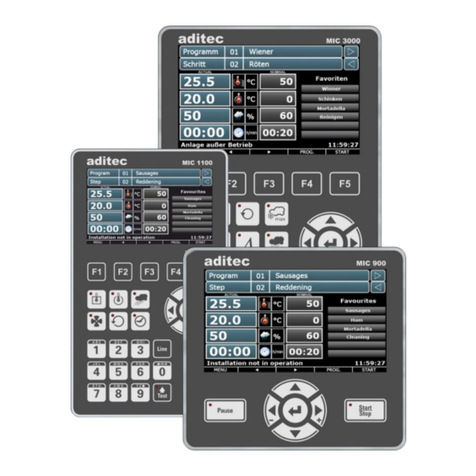
aditec
aditec MIC 900 user manual
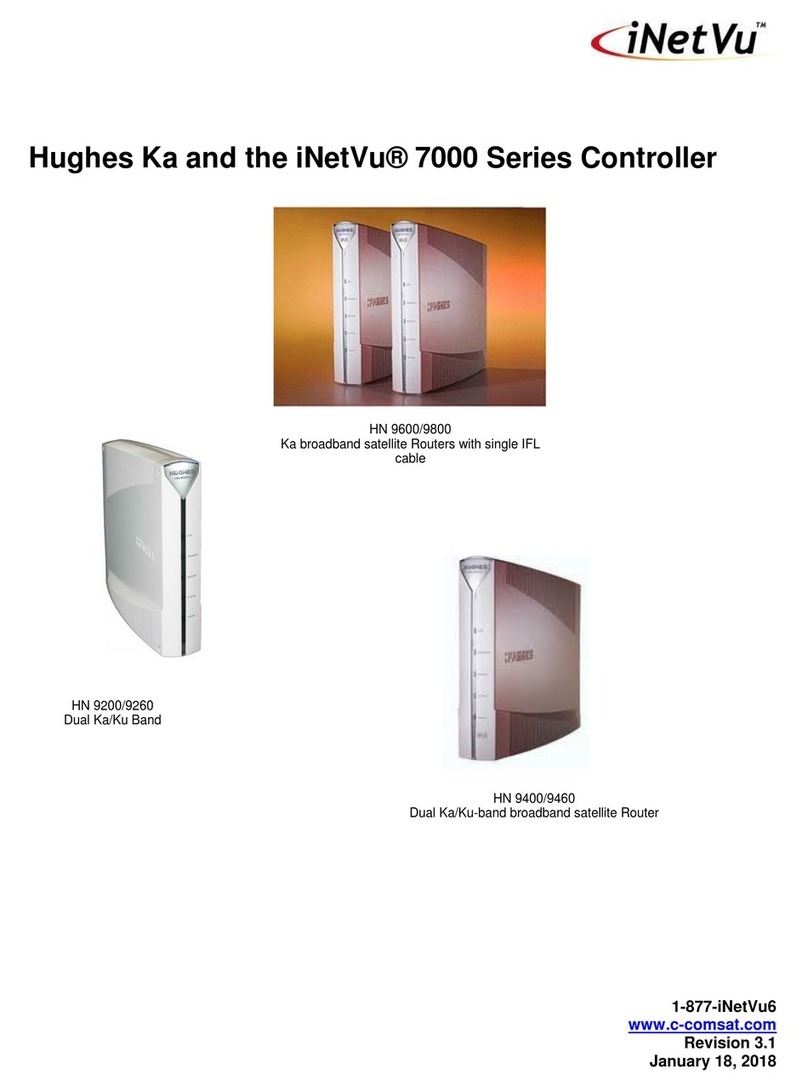
iNetVu
iNetVu 7000 Series quick start
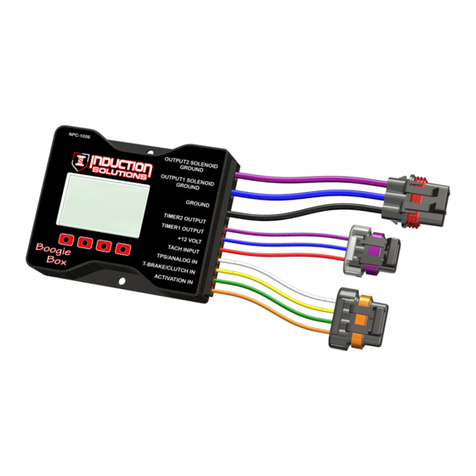
Induction Solutions
Induction Solutions Boogie Box NPC-1006 user manual
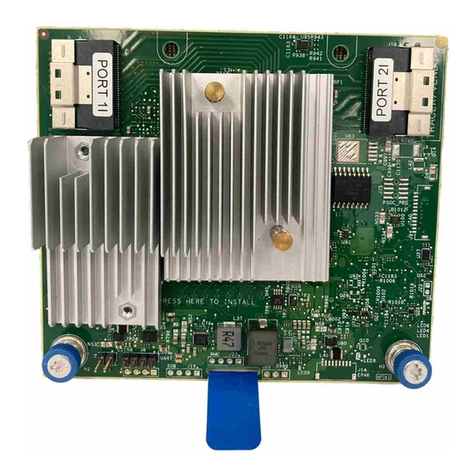
HP
HP MR Gen10 Plus user guide
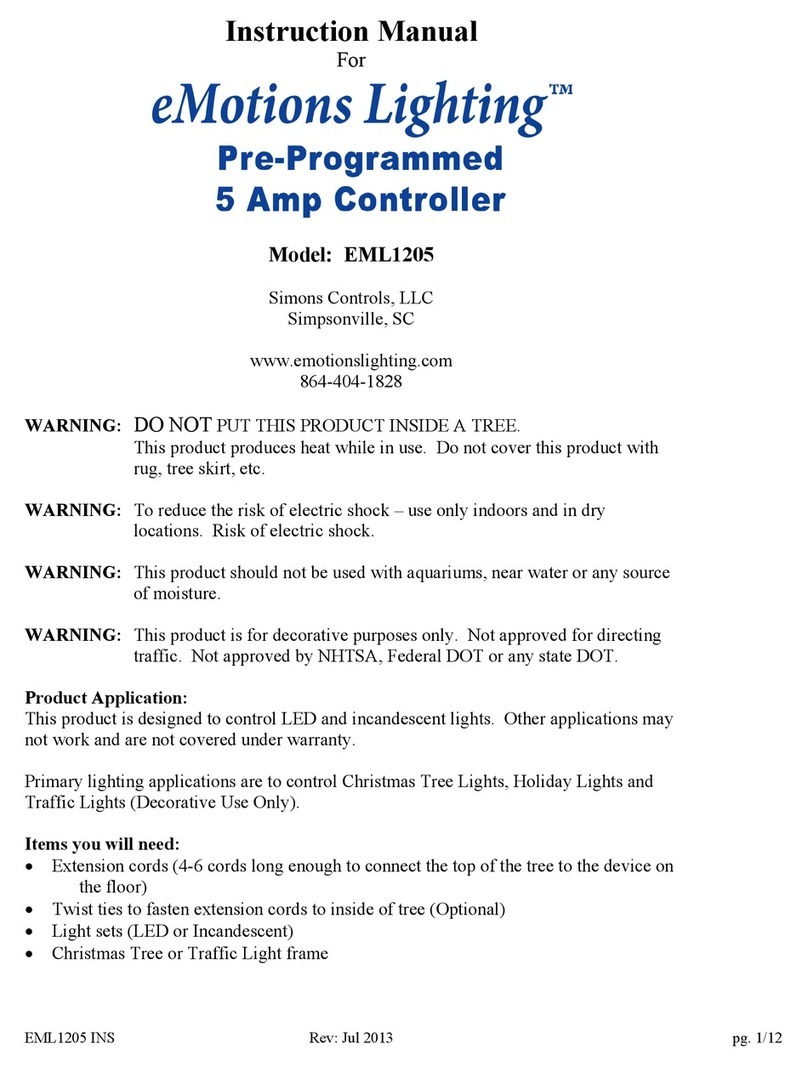
eMotionLighting
eMotionLighting EML1205 instruction manual
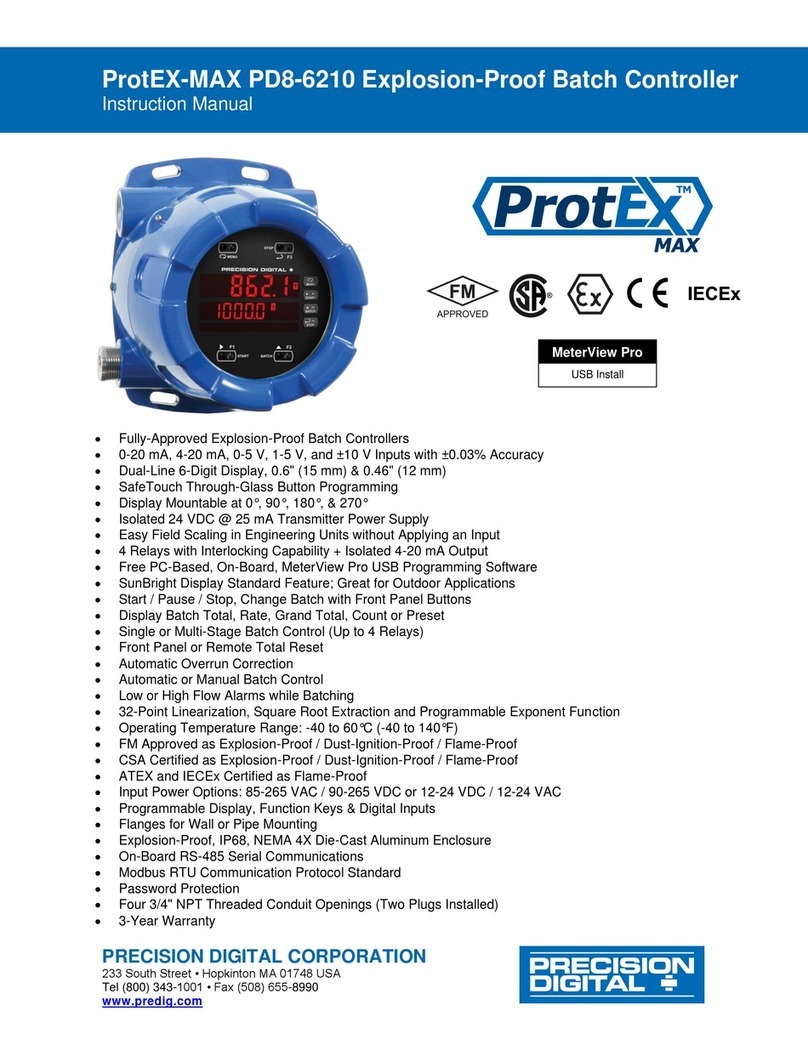
Precision Digital Corporation
Precision Digital Corporation ProtEX-MAX PD8-6210 instruction manual

